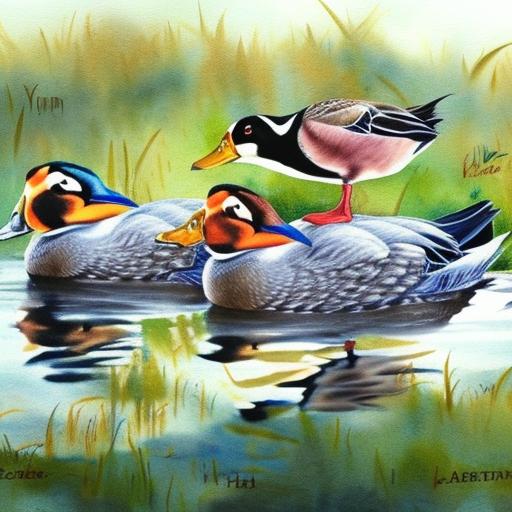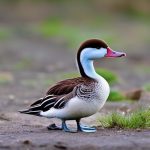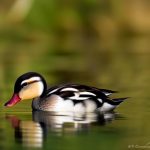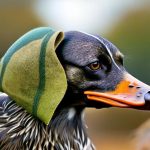Ducks are not only adorable and entertaining animals, but they also play a crucial role in maintaining the balance of ecosystems. Unfortunately, many duck breeds are currently facing the threat of extinction due to various factors such as habitat loss, climate change, and human activities. Endangered duck breeds are those that are at risk of disappearing from the planet if conservation efforts are not put in place. These breeds are not only valuable for their genetic diversity but also for their unique characteristics and contributions to the environment. It is essential to raise awareness about the plight of endangered duck breeds and take action to protect and preserve them for future generations.
Endangered duck breeds come in a variety of shapes, sizes, and colors, each with its own distinct characteristics and traits. From the majestic Mallard to the striking Mandarin duck, these breeds have captured the hearts of people around the world with their beauty and charm. However, many of these breeds are now facing the threat of extinction, and urgent action is needed to ensure their survival. By understanding the characteristics of endangered duck breeds, we can appreciate their value and work towards protecting them from disappearing forever.
Key Takeaways
- Endangered duck breeds face various threats including habitat loss, hunting, and competition from non-native species.
- Conservation efforts for endangered duck breeds include captive breeding programs, habitat restoration, and public awareness campaigns.
- Preserving endangered duck breeds is important for maintaining genetic diversity, ecosystem balance, and cultural heritage.
- Individuals can help protect endangered duck breeds by supporting conservation organizations, avoiding hunting or disturbance of duck habitats, and promoting sustainable land use practices.
- Success stories in preserving endangered duck breeds include the recovery of the Laysan duck population in Hawaii and the conservation efforts for the Madagascar pochard.
Characteristics of Endangered Duck Breeds
Endangered duck breeds exhibit a wide range of physical and behavioral characteristics that make them unique and valuable. For example, the Crested duck is known for its distinctive crest of feathers on its head, while the Campbell duck is prized for its high egg production. The Hook Bill duck, with its distinctive downward-curved bill, is another endangered breed that stands out for its unusual appearance. These physical traits not only make these breeds visually appealing but also contribute to their genetic diversity, which is essential for the overall health and resilience of duck populations.
In addition to their physical characteristics, endangered duck breeds also possess unique behavioral traits that make them valuable to conservation efforts. For example, the Indian Runner duck is known for its upright posture and distinctive running gait, which sets it apart from other duck breeds. The behavior of these ducks not only adds to their charm but also contributes to their adaptability and resilience in different environments. By understanding and appreciating the characteristics of endangered duck breeds, we can gain a deeper appreciation for their value and the importance of preserving them for future generations.
Threats to Endangered Duck Breeds
Endangered duck breeds face a multitude of threats that put their survival at risk. Habitat loss and degradation are among the most significant threats, as wetlands and other natural habitats that ducks rely on for nesting, feeding, and breeding are being destroyed at an alarming rate. Pollution, including water pollution from agricultural runoff and industrial waste, also poses a significant threat to duck populations, affecting their health and reproductive success. Climate change further exacerbates these threats by altering the availability of suitable habitats and food sources for ducks.
Human activities such as hunting, poaching, and the illegal wildlife trade also contribute to the decline of endangered duck breeds. Overexploitation of duck populations for their meat, eggs, feathers, and other products has led to a significant decrease in their numbers. Invasive species and diseases introduced by human activities also pose a threat to endangered duck breeds by competing for resources and spreading pathogens. It is crucial to address these threats and take proactive measures to protect endangered duck breeds from further decline.
Conservation Efforts for Endangered Duck Breeds
Conservation efforts for endangered duck breeds are essential for ensuring their survival and preventing their extinction. One of the most effective conservation strategies is the establishment of protected areas and reserves specifically designed to conserve and restore duck habitats. These protected areas provide safe havens for endangered duck breeds to thrive without the threat of habitat destruction or human disturbance. Additionally, captive breeding programs play a crucial role in conserving endangered duck breeds by maintaining genetically diverse populations in controlled environments.
Another important conservation effort is the implementation of sustainable management practices that promote the conservation of wetlands and other critical habitats for ducks. This includes regulating water use, controlling pollution, and restoring degraded habitats to ensure the availability of suitable environments for endangered duck breeds. Education and outreach programs also play a vital role in raising awareness about the importance of conserving endangered duck breeds and promoting responsible stewardship of natural resources.
Importance of Preserving Endangered Duck Breeds
Preserving endangered duck breeds is crucial for maintaining the genetic diversity of duck populations and ensuring their resilience in the face of environmental challenges. Genetic diversity is essential for the long-term survival of species, as it provides the raw material for adaptation to changing environmental conditions. Endangered duck breeds may possess unique genetic traits that could be valuable for breeding programs aimed at improving the overall health and adaptability of duck populations.
Furthermore, preserving endangered duck breeds contributes to the overall health of ecosystems by maintaining balanced food webs and nutrient cycling processes. Ducks play a vital role in controlling insect populations, dispersing seeds, and creating microhabitats that support a wide range of other species. By preserving endangered duck breeds, we can help maintain the ecological functions that these species provide, ultimately benefiting the health and stability of entire ecosystems.
How Individuals Can Help Protect Endangered Duck Breeds
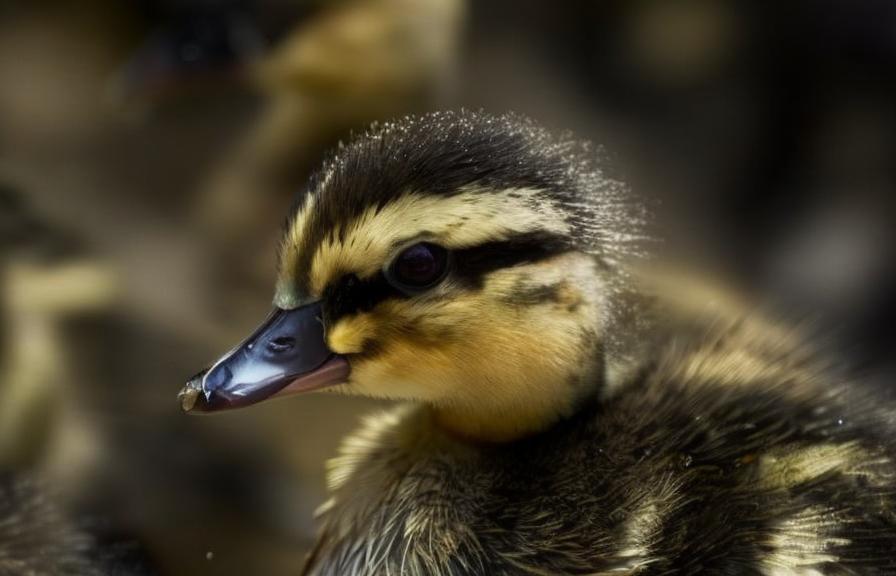
Individuals can play a significant role in protecting endangered duck breeds by supporting conservation efforts and promoting responsible stewardship of natural resources. One way to help is by supporting organizations and initiatives dedicated to conserving endangered duck breeds through donations, volunteer work, or advocacy. By contributing to these efforts, individuals can help fund critical conservation projects, raise awareness about the plight of endangered duck breeds, and support research aimed at understanding and addressing the threats they face.
Another way individuals can help protect endangered duck breeds is by making environmentally conscious choices in their daily lives. This includes reducing water consumption, minimizing pollution, supporting sustainable agriculture practices, and advocating for policies that protect wetlands and other critical habitats for ducks. By reducing our ecological footprint and promoting sustainable living practices, individuals can help create a healthier environment for endangered duck breeds and other wildlife.
Success Stories in Preserving Endangered Duck Breeds
Despite the many challenges facing endangered duck breeds, there have been success stories in preserving and restoring their populations. One notable success story is the conservation efforts for the Nene goose in Hawaii, which was once on the brink of extinction due to habitat loss and predation by introduced species. Through captive breeding programs, habitat restoration, and predator control measures, the Nene goose population has rebounded, offering hope for the recovery of other endangered duck breeds.
Another success story is the conservation efforts for the Madagascar pochard, a critically endangered diving duck that was thought to be extinct until a small population was rediscovered in 2006. Through collaborative efforts involving local communities, conservation organizations, and government agencies, captive breeding programs have been established to increase the population size of this rare duck species. These success stories demonstrate that with dedicated conservation efforts and public support, it is possible to protect and restore endangered duck breeds for future generations to enjoy.
In conclusion, endangered duck breeds face numerous threats that put their survival at risk, but with concerted conservation efforts and public support, it is possible to protect and preserve these valuable species. By understanding the characteristics of endangered duck breeds, recognizing the threats they face, supporting conservation efforts, and making environmentally conscious choices in our daily lives, individuals can contribute to the protection of these unique and important species. Success stories in preserving endangered duck breeds offer hope for their future, inspiring us to take action to ensure that these beautiful birds continue to grace our planet for generations to come.
If you’re interested in learning more about endangered duck breeds and how to protect them, be sure to check out Poultry Wizard’s insightful article on breeding guinea fowl and the importance of preserving rare poultry breeds. The article provides valuable information on the challenges faced by endangered duck breeds and offers practical tips for conservation efforts. You can read the full article here.
FAQs
What are endangered duck breeds?
Endangered duck breeds are species of ducks that are at risk of extinction due to factors such as habitat loss, hunting, and competition with invasive species.
Why are some duck breeds endangered?
Duck breeds become endangered due to a variety of factors including habitat destruction, pollution, overhunting, and competition with invasive species. These factors can lead to a decline in population and put the species at risk of extinction.
What are some examples of endangered duck breeds?
Some examples of endangered duck breeds include the Madagascar pochard, the Laysan duck, the Campbell Island teal, and the Brazilian merganser.
What is being done to protect endangered duck breeds?
Conservation efforts to protect endangered duck breeds include habitat restoration, captive breeding programs, and the establishment of protected areas. Additionally, efforts to reduce hunting and control invasive species are also important for the conservation of these species.
How can individuals help protect endangered duck breeds?
Individuals can help protect endangered duck breeds by supporting conservation organizations, advocating for habitat protection, and reducing their impact on the environment through sustainable practices. Additionally, raising awareness about the plight of endangered duck breeds can also help garner support for their conservation.
Meet Walter, the feathered-friend fanatic of Florida! Nestled in the sunshine state, Walter struts through life with his feathered companions, clucking his way to happiness. With a coop that’s fancier than a five-star hotel, he’s the Don Juan of the chicken world. When he’s not teaching his hens to do the cha-cha, you’ll find him in a heated debate with his prized rooster, Sir Clucks-a-Lot. Walter’s poultry passion is no yolk; he’s the sunny-side-up guy you never knew you needed in your flock of friends!

